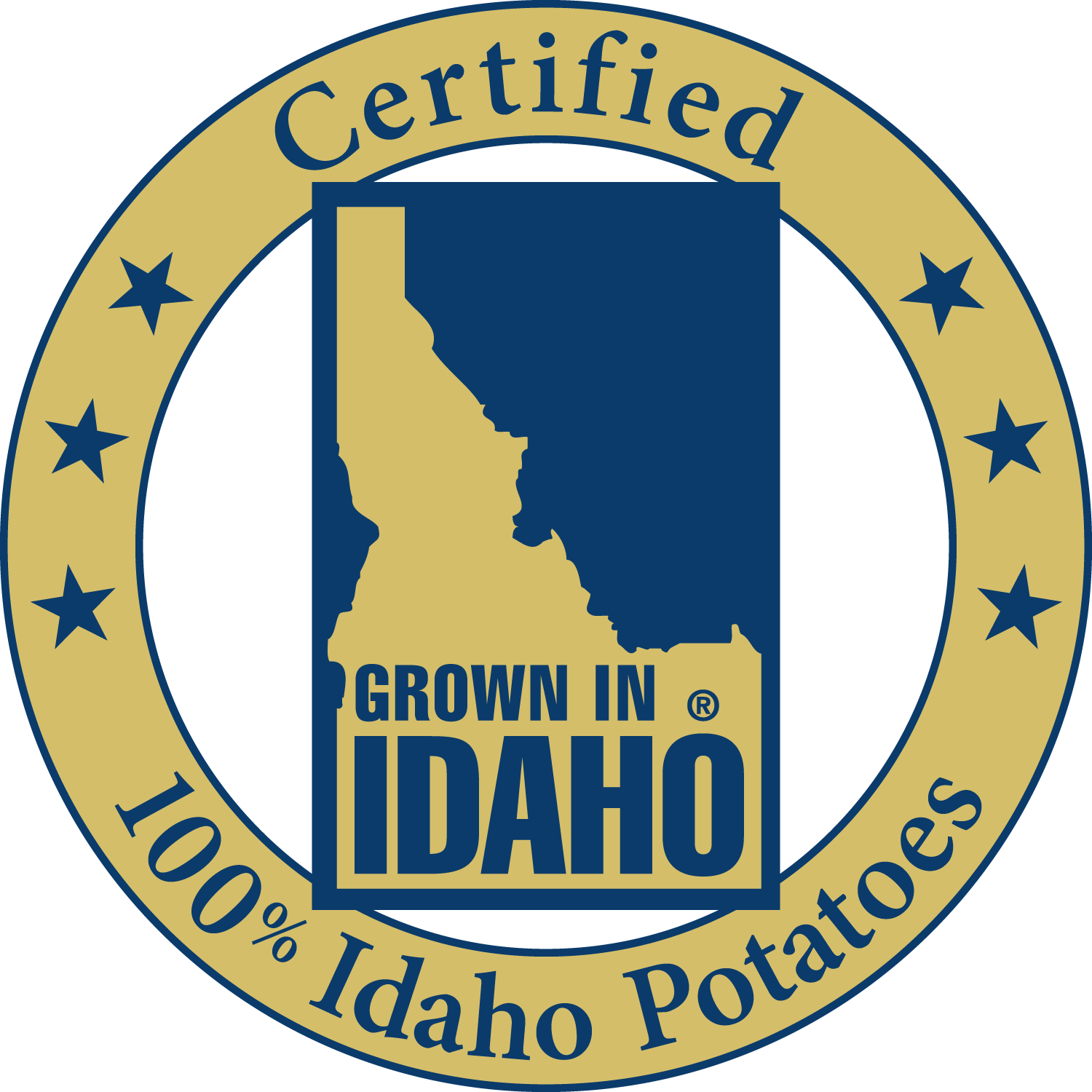Popular Tags
Ask Dr. Potato
With 924 posts, chances are there's already an answer to your question. Please try searching below before submitting a question to Dr. Potato. Use multiple words to help narrow down the results. For example, search for "potatoes" and "group" if looking for an answer on cooking potatoes for large groups.
Ten steps to better homemade Idaho® Potato french fries
Are there some tips on how I cannot screw up the relationship I have with homemade Idaho® French fries? What exactly are the pitfalls I need to avoid to please guests with the best fresh cut French fries?
That’s a lot more complicated question than you can imagine for someone like me. My official relationship with loving French fries goes back to McDonald’s and the golden arches on Broadway in Denver. This was when the chain was in its infancy and I was just learning to drive. Back in the olden days, McDonald’s French fries were made from scratch. That means bags of Russet Burbank potatoes, mostly from Idaho and later exclusively from Simplot, a company based in Boise Idaho and the inventors of the frozen French fry many of us now enjoy, arrived at the back door and were washed, peeled, cut, blanched and placed in a wall of fry baskets ready to finish fry to order. The burgers were small and sold in quantities for a bargain price for a bag of hamburgers. Most were plain and sold for a buck, or you could add cheese but there was very little choice as to what went on besides mustard, ketchup and a see-thru slice of pickle. The fresh made fries were cooked in animal fat or lard and they were amazingly tasty. Portion sizes for the fries were typically 3 ounces, about the equivalent of a kid’s meal portion now. Fry temps could easily be 375 degrees F, baskets were full and life was good.
Fast forward to now and the gourmet burger craze has so many variations on a theme it is unbelievable. Think you know how to top a burger? Go to www.burgerbusiness.com and prepare to be surprised.
A good homemade fry is an aspiration that is desired, but seldom fulfilled by operators. It takes a McDonald’s style fanatical desire to work thru the basic steps, knowing that there will be some inconsistencies and trying to eliminate as many variables as possible.
What are the variables…
- You can fry any potato, but only a few varieties fry up well. It has to do with solids and starch content. The more solids, the less water, the crispier fry. So if you want to mess up your fry, don’t think about the potato variety. On the “A” list of perfect fries is the Russet Burbank variety. It is mostly available year round and Idaho grows more of this variety than any other state. Ask for it by name and, in my opinion, by state. In Europe, people prefer a yellow flesh potato for their fries, and here in the states you can often find people who swear by the Kennebec variety, a rounder yellow chipping potato. Idaho used to grow this variety; the farmers found it had a tendency to bruise easily, the thin skin not protecting the potato as well. This thin skin can also pick up greening by exposure to light. There are a number of other yellow flesh varieties; probably the Yukon Gold is the best known. It typically does not have the higher solids and is often considered a medium starch potato. Idaho grows a number of varieties for Frito Lay, some of these find their way into the In-N-Out chain now instead of the Kennebec they used to advertise using. A proprietary yellow flesh potato that is doing pretty well for fries is the Golddust and Idaho grows this as well as other states in the West. In the gap between old crop and new for Russet Burbanks you may find other Idaho russet varieties that perform pretty well including the Ranger, the Umatilla, the Alturas, the Classic. And, with a lower blanch temp, the Russet Norkotah can be perfectly acceptable too. How do you find out what variety your foodservice distributor is shipping you? In Idaho the variety is required to appear on the bag or carton. Look up all the varieties Idaho growers produce in quantity on our web site in the section on fresh shippers and processors.
- Know how the potato has been stored. While you may not have any control over this, it will affect the outcome. A potato that has been stored too cold converts some of the starch to sugar and when that fries up, the potato strips will brown quickly, sometimes even before fully cooked inside. Below 40 degrees F this transition starts. A state that has little or no processing (typically the manufacturers insist on proper storage temps to have a potato that will fry up golden brown or lighter and not dark) will store the potatoes too cold. It helps the potato slow down getting soft or sprouting. There are some tips on Dr. Potato on testing for sugar, reconditioning to reverse some of the sugar accumulation. But ask the supplier, check the potatoes using diabetic test strips, rotate inventory for first in, first out, ideally store at the unit for 48-55° F.
At the beginning of a season (August to October) there may be some excess starch and sugar in the spuds, cut and rinse in a container or sink in water till the water runs clear. In January and February there may be times the potatoes are hard to work with for excess sugar, this is due to the extreme cold temps when taking potatoes out of storage, or transporting them. - What you order is as important as how you order… Do you want to minimize your labor when making fresh fries? Then order #1 potatoes in cartons. I usually advise operators to order the 80 to 90 count spuds, as these are typically the sweet spot for the crop so are priced accordingly as the least expensive. The larger sizes typically come in at a higher price per carton. Larger sizes that are practical for fries are 70s and 60s. The giant 50 and 40 counts (approximately forty of the 40 counts are in a carton or box) are usually a pound or more each and too large to fit in the fry cutter without using a knife to cut in half first. That slows you down. The #1 potatoes, while more expensive in any given year, have less misshapen potatoes per box and less defects (cuts, bruises) and no clipped ends that can fry up dark or internal decay that has to be removed before frying.
The Standard is a little known grade that is basically a #2, but with less defects and no clipped knobs or ends, allowing it to be on display at a unit in a public area (such as Five Guys) without breaking down as fast due to exposure to warmer temps.
The most economical potato, because it can have pointed end or boomerang shapes or a few more defects, external and internal is the No. 2 grade. NOTE: the potatoes taste the same as No. 1 potatoes, so these are often used where the final shape is not critical. So the No. 2 potatoes are especially well suited for fresh cut or homemade fries as well as hash browns, scalloped or home fries and mashed potatoes. - Just like the dentist says, be sure to brush properly, wash and rinse… Potatoes are washed when they come out of storage and run thru the lines at a shipping facility by fluming in water. Once they are packed and dried they can still have traces of sand or soil that are on the potato, so be sure to wash, rinse and dry before frying.
- Cut with a sharp knife…. Ever try to cut a tomato skin or red pepper with a dull knife? A French fry cutter, table top or a wall mount, as preferred by most serious French fry operators doing fresh potatoes, still needs for the glide or slide mechanism to be clean, and free of potato starch. Paying less than $150 for a cutter only works if your volume is minimal. Use some vegetable oil on a paper towel to run across the glides, if the potato cutter seems to be sticking. REPLACE the blades periodically, they dull or can give a ragged cut to the length of the fry. Those minor jagged edges will fracture and break the fries into smaller pieces when agitated in water or in the fryer oil. Use a quality French fry cutter. The highest volume places have pretty heavy duty ones. The upper echelon might even find a way to use a hydraulically operated machine, introduced at the NRA show last year at the Nemco booth. I have even seen a supplier in Las Vegas who precuts and blanches the potatoes into fry strips for Mon Ami Gabi (flat fry strip rather than rectangle) work with a local company to develop their own version of a hydraulic foot operated press for passing the raw potatoes thru the cutter blade. You need to hire Samoan Wrestlers or people with major large arms to cut potatoes into French fries all day… Trust me it is hard work and easier just to pick up the phone and order some frozen fries…
- Rinse again… the potatoes should be cut into a clean sink filled with water and then transferred into large food safe buckets, white or the green colored buckets (items such as bulk pickles come in) not left over orange Home Depot buckets. These should also have water, to cover the fries and prevent oxidation. I preferred chilled water, with a little acidity, from adding white wine vinegar or concentrated lemon juice, 1 Tablespoon per gallon of water is sufficient. Store refrigerated until ready to blanch.
- Get the sliced potatoes ready to blanch. If the water is cloudy from excess starch, rinse off the fries in the bucket till it runs clear. Handle carefully to not break the strips of fries and drain off the water. There are giant “salad spinner” containers that some people have great success in using to spin off the excess water before transferring the strips of potatoes into fry baskets. Again, shake to drain off as much water as possible. When water hits frying oil it pops and this can burn you, but also it will speed up the breakdown of the oil as will not skimming off the bits and pieces of fries, salting potatoes over the fryer or having the fry temps too high (360° F or more is too high, most manufacturers of oil now recommend a maximum temp of 350° F). The fuller you fill the baskets with raw potatoes the longer it will take to cook and the more uneven the fries will be cooked. I recommend never, never, ever filling past half full. Before placing the strips of potatoes into the fryer, pre-set the temps down to 325° F. Blanching times take longer for steak cut than shoestring, we have some examples of the times in the foodservice section of www.idahopotato.com under the “How To” area for fresh fries. A properly blanched fry will bend, almost feel rubbery, but still be light in color.
- Store the blanched fries… in the days of old, operators would buy multiple fry baskets, sometimes a wall of them and store the blanched fries at room temp till ready to finish fry, often for the next meal period and sometimes overnight. This is a no-no. Health departments want you to let the blanched fries cool, but then within fifteen to 20 minutes, transfer into the walk in so they can be refrigerated till ready to final fry.
Reasons include… someone can spill another food product (or worse yet, cleaning supplies) on the blanched potatoes just lying out in the open. If the person handling the potatoes has a cut, which could transfer to a fry basket and then issues can come up, with a perfect warm to room temp product helping grow pathogens. Finally, remember the rule in foodservice, hot food hot, cold food cold and the danger zone is in between. For good food safety practices, cool and place into refrigeration.
Back to the now cooled fries. Place them, not too deep, into the kind of food storage rectangle plastic tubs that Cambro and Rubbermaid make. Ideally, the tubs should have a metal grid on the bottom so excess oil can drain off the potatoes to under the grid. If the fries still are warm, don’t put the lid on when you place into the walk-in, as the steam will rise and the moisture that forms on the lid will drop right back down on the blanches fries, making the top level soggy. You could put clean kitchen towels loosely on top of the fries to absorb some of the moisture. Some people will use the tall racks to slip the rectangle tubs into, and cover the very top one with a towel.
Storing the blanched fries allows them to rest and form a surface that will not be penetrated by oil as easily for the finish fry, resulting in a crisper version than it you took the same exact potatoes, and just fried once. Each time you fry, more steam and water is released and partially displaced by oil. - Just before lunch or dinner, bring out the fry baskets you need. Don’t place them in the rack above the fryer oil, the heat from the oil will “wilt” the fries, that steam makes them turn soft.
- Fry at 350° F. Use half full baskets. Ideally, fry one basket at a time unless you have one of the newer fryers that have great recovery time on coming back to temperature. Part way thru the frying, give the basket a shake, to help redistribute the fries. If you don’t add in the shake, the outer fries will be extra crispy when those in the middle have not finished cooking. Once golden brown, remove from the fryer and dump into a flat surface area. Now, salt to taste, and bag or package to order. Don’t bag too many in advance.
Share This

Dr. Potato isn't a real doctor but a team of potato experts ready to answer all your potato questions.
Click here to submit »
Dr. Potato Categories
The Idaho Potato Commission
Established in 1937, the Idaho Potato Commission (IPC) is a state agency that is responsible for promoting and protecting the famous "Grown in Idaho®" seal, a federally registered trademark that assures consumers they are purchasing genuine, top-quality Idaho® potatoes. Idaho's ideal growing conditions, including rich, volcanic soil, climate and irrigation differentiate Idaho® potatoes from potatoes grown in other states.
Contact
661 South Rivershore Lane
Suite 230
EAGLE, ID 83616
Phone: 208-334-2350
Fax: 208-334-2274
More

